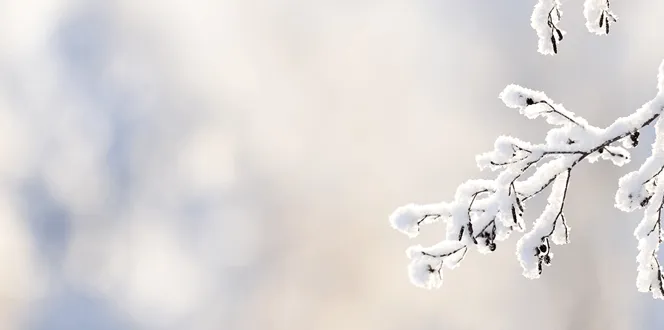On the worst days of winter, your potted plants are likely a bit jealous of the nearby trees planted in the ground.
Think about it this way. In winter, other trees are tucked underground and coated with mulch, which protects their roots from the cold.
But potted trees sit out in the open. And when it comes to shielding roots from the cold, a container just doesn’t cut it.
Luckily, it’s easy to mimic that cozy, insulated environment for your trees in containers!
How to Overwinter Potted Trees (Including Apple, Maple and Evergreens)
In just a few steps, you can give your container tree a worry-free winter.
How should I be storing potted trees over winter?
- Option one: Plant it (temporarily!).
If you’ve got the yard space, bury the tree in a hole, container and all! Then, spread mulch or leaves on top for extra insulation. This works best if you’d like to plant a new tree in spring. That way, you can re-use the hole you already dug! - Option two: Store in a cool spot that doesn’t freeze, like your garage.
Lots of containerized plants can spend the winter inside if the temperature's 30- and 40-degrees Fahrenheit. But you should do a little research on your plant to make sure it’ll be OK indoors with limited sunlight–especially if you have an evergreen with broad leaves, like a magnolia or crape myrtle, a tropical citrus tree or a tree that’s above a zone 7. Those trees could be injured by temperatures that approach freezing. - Option three: Make a warm enclosure.
Grab some chicken wire along with plenty of mulch or straw. Encircle the potted tree with wire, like you’re building a fence around it. Then, drop in the mulch or hay, completely covering the tree from the ground to the top of the container. This insulation should protect the tree’s roots from winter’s coldest temperatures, which are the most vulnerable part of the tree. Your goal is to keep the root system at or above 20 degrees Fahrenheit. Make sure the mulch or straw you are using is not wet or damp. Excessive moisture may cause tissue rot.
Is that the same for potted maple, fruit or evergreen trees in winter?
Pretty much, but some trees, like evergreens and fruit trees, do appreciate a little extra care.
Before choosing the best way to winterize your potted evergreen or fruit tree, consider this.
- Potted evergreens are especially prone to drying out. To combat that, use an anti-desiccant spray to help reduce moisture loss and keep them green in winter.
- While apple trees usually handle the cold quite well, trees like citrus or peach don't! They're much more vulnerable to freezing temperatures. So, read up on how cold your specific tree can get. Then, if you need to, give it an extra layer of protection. Consider wrapping the pot in burlap before doing option two or three above.
Anything else I need to do to overwinter those potted or container trees?
Glad you asked! Right before autumn arrives, you should not heavily fertilize your tree with a fast-release nitrogen product. That way, it likely won’t start any new growth too close to winter. It’s still OK to use a slow-release fertilizer if you please.
Also, throughout the fall, water the tree if it hasn’t rained for several weeks. Then, plan for one last deep watering right before the first winter freeze. In winter, water the tree whenever the soil feels dry to the touch.





